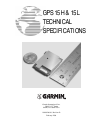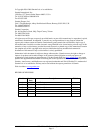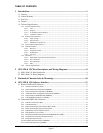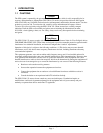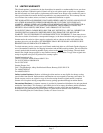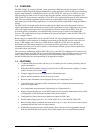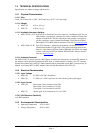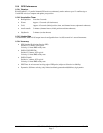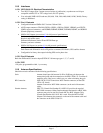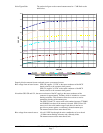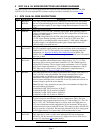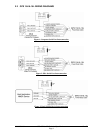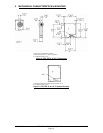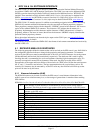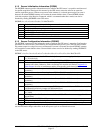
190-00266-01 GPS 15H & 15L Technical Specifications Rev. D
Page 3
•
•
1.3 OVERVIEW
The GPS 15H & 15L are part of Garmin’s latest generation of GPS sensor boards designed for a broad
spectrum of OEM (Original Equipment Manufacture) system applications. Based on the proven technology
found in other Garmin 12-channel GPS receivers, the GPS 15H & 15L track up to 12 satellites at a time
while providing fast time-to-first-fix, one-second navigation updates, and low power consumption. The
GPS 15H & 15L also provide the capability of FAA Wide Area Augmentation System (WAAS) differential
GPS. Their far-reaching capabilities meet the sensitivity requirements of land navigation, the timing
requirements for precision timing applications, as well as the dynamics requirements of high-performance
aircraft.
The GPS 15H & 15L designs utilize the latest technology and high-level circuit integration to achieve
superior performance while minimizing space and power requirements. Critical components of the system,
such as the digital baseband processor, were designed by Garmin to ensure that the GPS 15H & 15L
provide the quality, performance, and capabilities that you have grown to expect from Garmin GPS
receivers. The elegant hardware design, combined with software intelligence, makes the GPS 15H & 15L
easy to integrate and use.
Because they are complete GPS receivers, the GPS 15H & 15L require minimal additional components
from an OEM or system integrator. A minimum system must provide the GPS receiver with a source of
power, a GPS antenna, and a clear view of GPS satellites within the 1.5 GHz band. For optimum
performance, the GPS antenna should be an active antenna with a gain between 10 and 30 dB. If cost
constraints prevent the use of an active antenna, a well-matched, efficient, passive antenna attached by a
short cable can be used instead.
The system may communicate with the GPS 15H & 15L via two RS-232 compatible receive channels and
one transmit channel. The GPS 15H & 15L internal FLASH memory allows the GPS to retain critical data
such as satellite orbital parameters, last-known position, date and time. End-user interfaces such as
keyboards and displays are the responsibility of the application designer.
1.4 FEATURES
12-channel GPS receiver tracks and uses up to 12 satellites for fast, accurate positioning and low
power consumption.
Differential DGPS capability utilizing real-time WAAS or RTCM corrections yielding 3–5 meter
position accuracy (see section
1.5.4.4).
•
•
•
•
•
•
•
•
•
•
Compact, rugged design ideal for applications with minimal space.
May be remotely mounted in an out-of-the-way location.
Receiver status information can be displayed directly on a chartplotter or PC.
User initialization is not required. Once installed and a fix is obtained, the unit automatically
produces navigation data.
User-configurable navigation mode (2-dimensional or 3-dimensional fix).
Highly accurate one-pulse-per-second (PPS) output for precise timing measurements. Pulse width
is configurable in 20 millisecond increments from 20 ms to 980 ms.
Configurable for binary format carrier phase data output on COM 1 port.
Flexible input voltage levels of 3.3 to 5.4 VDC (GPS 15L) or 8.0 to 40 VDC (GPS 15H).
Built-in backup battery to maintain real-time clock for up to 21 days. Provision for external power
to maintain the real-time clock for longer intervals.
FLASH-based program and non-volatile memory. New software revisions upgradeable through
Web site download and serial interface. Non-volatile memory does not require battery backup.



